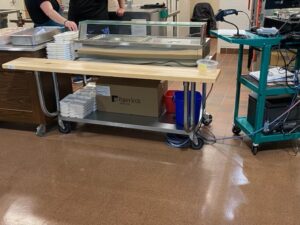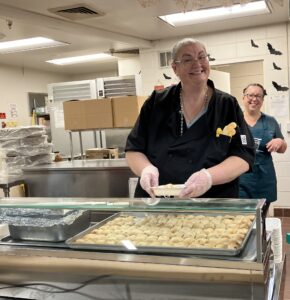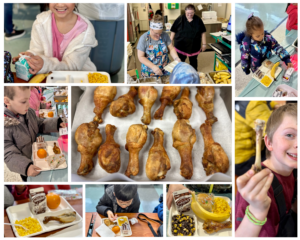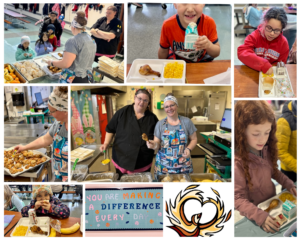The complete text of the nominations for the Arctic School Food Service Innovation Competitions ins included on this page. Nomination forms are presented verbatim; AKSNA nor its Board of Directors represent the veracity of the nominations.
Tiffany Kurani (Anchorage School District)



The Anchorage School District has stated its intention to transition from pre-packed, overwrapped ready-to-heat meals toward freshly prepared and served meals on a traditional cafeteria line for approximately six years. In this time, a lot has been said, but little has been done. The COVID-19 pandemic and lingering impacts such as supply chain and staffing challenges have hampered progress; however, in the past year, Anchorage has begun to actualize this reality. There are many entities that could share credit for this achievement, however, in my opinion, Tiffany Kurani, NDRT, is a stand-out individual who has made meaningful contribution to Anchorage’s progress.
A significant challenge in Anchorage is that there are over 60 elementary schools which are compact and designed specifically for the heat-and-serve food service model, leaving little room for the necessary equipment to implement scratch or speed-scratch service and to implement a traditional cafeteria line that can handle the volume of students who pass through Anchorage’s schools. The cost for full school renovations is neither financially nor politically viable for Anchorage, except perhaps in a few select schools.
Tiffany prototyped a cart that could meet the logistical and operational needs within the restrictive space and environments most commonly found in Anchorage schools. The cart was build from off-the-shelf parts at an affordable price that allowed Anchorage to mitigate the equipment and space hurdles that had previously prevented them from implementing hot meal service and allowed the ASD team to work through the remaining challenges such as staffing and food delivery to successfully launch a traditional-style meal service at multiple elementary schools ensuring that students have access to higher quality meals that are served fresh as they come to the line.
There is no doubt that the implementation of fresh, traditional-style meal service in Anchorage schools has been a team effort; with that said, this competition allows for just a single individual’s accomplishment’s to be recognized, and I therefore nominate Tiffany Kurani for her specific contributions toward developing the physical service platform.
One may argue that serving meals fresh from the line is not an innovation, in fact, this has been done as early as around the 1930’s and earlier. School districts that serve ready-to-heat meals like Anchorage come from a culmination of convenience and expedience-focused services and products such as the Automats and TV dinners; both known for convenience and cost effectiveness, but are not known for quality. There is significant savings, or economies of scales, for districts that centralize cook staff; however, once a district such as Anchorage has invested into this service model, it can seem an insurmountable task to change direction; the cost of renovating 60 school kitchens would reach into the tens of millions of dollars. For that reason, the creation of a cost-effective solution that frees Anchorage to pursue a traditional service style within its current limitations is indeed innovative and warrants commendation for the Anchorage Student Nutrition team.
Laura Homan (Anchorage School District)



ASD’s dream of traditional service at all schools would not be a reality without the passionate efforts of Laura Homan.
Laura spearheaded Student Nutrition’s long-standing vision of discontinuing plastic, overwrapped, pre-packed hot meals, and transitioning sites to traditional meal service.
Thanks to her fast-moving logistics and onsite training, Laura has transformed three elementary schools into traditional service in less than one semester, and her list is growing.
Hundreds of Elementary students receive openly prepared food, freshly plated on their meal trays in front of their eyes.
Laura was responsible for developing and implementing all required training for school staff. She not only set up most of the equipment and designed the layout for service flow, but she also did much of the leg work, getting the millions of pans, ladles, lids, containers, and buckets to start the program!
She continues to be the communication liaison between schools, staff, and Student Nutrition and performs site visits with heads of ASD to seek out the next wave of schools for Traditional service.
Laura’s innovation has expanded access and improved the quality and presentation of school meals to kids; she has increased meal counts by site and reduced waste by tons! The community and school support behind Laura and her development has been tremendously positive.
Student Nutrition and the Anchorage School District owe Laura a deep debt of gratitude.

